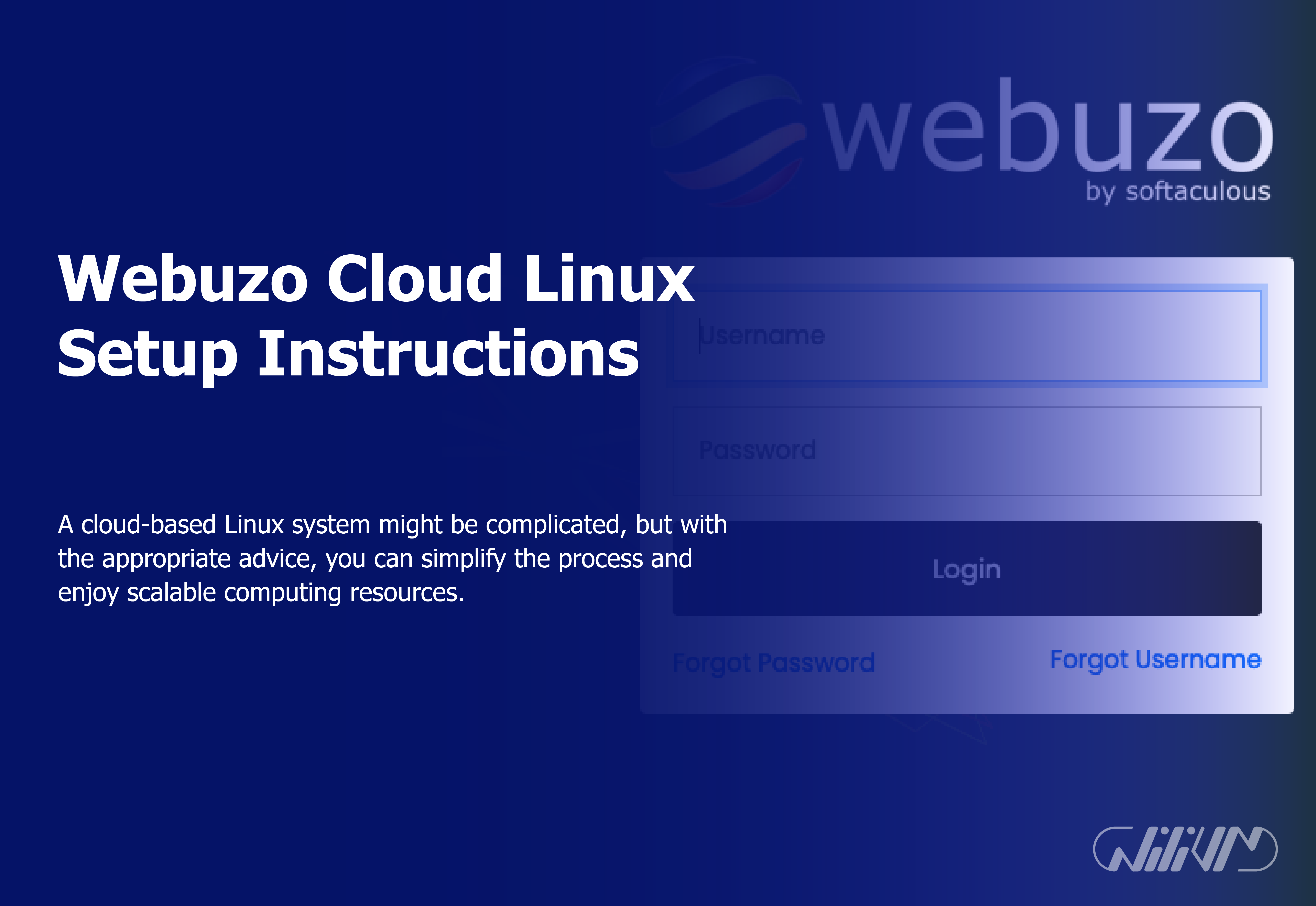
Webuzo Cloud Linux Setup Instructions
Setting up a cloud-based Linux infrastructure has various benefits, including flexibility, scalability, and cost-effectiveness. Webuzo, an easy-to-use control panel, makes it easier to manage many parts of your cloud environment, from server setup to application deployment.
Contents
- Choosing the Right Cloud Provider
- Creating a Virtual Machine Instance
- Installing Webuzo Control Panel
- Configuring Domain and DNS Settings
- Setting Up Web Server (Apache/Nginx)
- Installing and Configuring Databases
- Securing Your Cloud Linux Environment
- Uploading and Managing Files
- Deploying Web Applications
- Scaling Resources as Needed
- Monitoring Performance and Usage
- Backing Up Your Cloud Environment
- Troubleshooting Common Issues
- Conclusion
- FAQs
Choosing the Right Cloud Provider
Choosing the correct cloud provider is critical for a successful installation. Consider cost, available resources, data center location, and customer service. Amazon Web Services (AWS), Microsoft Azure, Google Cloud Platform (GCP), and DigitalOcean are also popular possibilities.
Get started now! Buy Linux VPS for seamless Webuzo Cloud Linux setup. Enhance your hosting.
Creating a Virtual Machine Instance
After selecting a cloud provider, you must establish a virtual machine (VM) instance. Provide information on the intended operating system (in this example, a Linux distribution), hardware specs, and storage choices. This will be the basis for your Webuzo-powered ecosystem.
Installing Webuzo Control Panel
After you’ve configured your VM, you may access it using SSH or the provider’s web portal. Then, for your selected Linux distribution, follow the Webuzo installation tutorial. The control panel will provide a graphical interface for managing your server, applications, databases, and other resources.
Configuring Domain and DNS Settings
Connect a domain name to your cloud environment to make it web-accessible. Configure DNS settings to point the domain to the IP address of your server. This step guarantees that users may access your apps and websites with a simple URL.
Setting Up Web Server (Apache/Nginx)
Configure your choice web server, such as Apache or Nginx, to host your online applications. Customize virtual hosts, activate SSL certificates for secure connections, and optimize server settings for speed. This phase is critical for effectively providing material to consumers.
Installing and Configuring Databases
Configure databases like MySQL or PostgreSQL to store and manage your application data. Within your apps, you may create databases, users, and permissions, as well as specify database connection settings. Because databases are the foundation of dynamic online applications, appropriate setup is critical.
Securing Your Cloud Linux Environment
Implement best practices in security to safeguard your cloud environment from dangers. Use firewalls, intrusion detection systems, and security upgrades on a regular basis. Additionally, for safe remote access, set user access restrictions and utilize SSH keys.
Uploading and Managing Files
Learn how to upload files to your cloud server using Webuzo’s SSH, FTP, or file management capabilities. Organize files into folders, provide proper rights, and efficiently manage material.
Deploying Web Applications
To deploy web applications such as WordPress, Joomla, or Drupal, use Webuzo’s one-click installers or manual configuration. Customize application settings, add plugins, and verify that your web server and database are properly integrated.
Scaling Resources as Needed
The capacity to expand resources depending on demand is one of the advantages of cloud systems. Learn how to change the allocations of CPU, RAM, and storage to handle increasing traffic or resource-intensive workloads.
Monitoring Performance and Usage
Monitor the performance of your cloud environment on a regular basis using built-in tools or third-party solutions. Monitor resource use, website speed, and database performance to detect and resolve bottlenecks.
Backing Up Your Cloud Environment
To avoid data loss, use automatic backup options. Schedule backups of your apps, databases, and configuration settings on a regular basis. In an emergency, you can instantly return your surroundings to its original condition.
Troubleshooting Common Issues
Resolve typical difficulties such as server unavailability, website failures, and application malfunctions. To successfully diagnose and troubleshoot issues, use logs, error messages, and internet resources.
Conclusion
Setting up a cloud Linux environment powered by Webuzo gives you the flexibility and scalability required for contemporary online applications. You’ve learnt the step-by-step method for creating, managing, and optimizing your cloud infrastructure by following this thorough tutorial. Utilize the power of the cloud to improve your online presence and give your consumers with seamless experiences.
FAQs
Can I switch cloud providers after setting up Webuzo?
While possible, migrating a cloud environment can be complex. It's recommended to choose the right provider initially.
Are automatic backups reliable?
Yes, automated backups are reliable, but it's wise to occasionally test the restoration process.
What happens if my cloud resources exceed limits?
Depending on the provider, your website or application might experience performance issues. Consider upgrading resources in such cases.
How often should I monitor my cloud environment?
Regular monitoring is key. Check performance metrics weekly and after significant changes.

